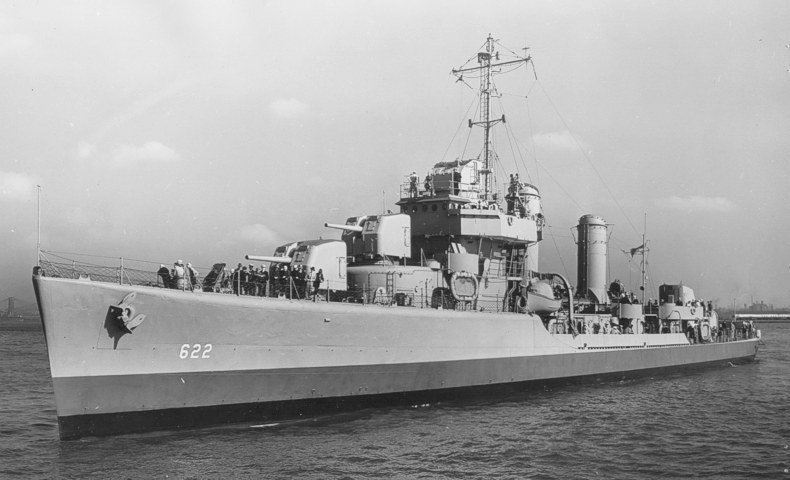USS Maddox - DD622
USS Maddox (DD-622) sunk after being bombed by German aircraft off Gela, Sicily, 10 July 1943. Only 74 survivors. Sank in two minutes.
(July 10, 1943)
During Operation 'Husky' (the invasion of Sicily) the American destroyer
Maddox was singled out by a lone Stuka dive-bomber when near Gela. Two bombs
were dropped, the second struck the No.5 gun turret. The blast triggered
off an explosion in the magazine, demolishing the rear end of the ship.
She then started to sink below the waves stern first. It was all over in
two minutes after the bomb hit the ship. Those men in the bowels of the
ship had no chance, 210 of them going down with the vessel. There were 74
survivors who were rescued by a tug nearby.
Source: George Duncan
Gela; USS Maddox Sunk
Edison was not at Gela so this is pieced together from comments made at the time (scuttlebutt) and accounts from other historical narratives. This narrative is not going to be comprehensive in covering the landings at Gela, nor will it cover in any detail the combat phase of the landings at Scoglitti, or the British assault on the southeast coast targeted toward the cities of Syracuse and Augusta. Suffice it to note that grudging progress was made by British forces up their coast toward Messina while encountering heavy resistance. This did have a bearing on the Allied hope to "seal off" the Strait of Messina and therefore on Edison's deployment as the Seventh Army "front" to the west moved toward the Straits of Messina.
Licata had been forecast to be the toughest assignment of the three landing areas for the U.S. forces. Using an all-landing craft assault force meant not only that those forces would be deployed from the nearest debarkation ports in North Africa but also reflected a desire to rapidly deploy and engage the enemy at the point where we expected defenses to be the strongest. As it developed at Licata, the enemy did not present the strongest resistance there and our landing strategy at Licata was pointedly successful.
Gela yielded stubbornly. German air chose to concentrate on the sea forces at Gela, both warships and transports. In the melee, a German divebomber got in on the stern of the destroyer USS Maddox with a very near miss, then a hit. These explosions did quite a bit of below-decks damage aft. Events proceeded unfavorably for Maddox, a Benson/Livermore 1630 ton destroyer like Edison. The stern went under, and a series of catastrophic explosions occurred under her hull, opening up so much space that she sank very fast, in about two minutes. The enemy bomb may not have set off "sympathetic" explosions of Maddox' ordnance but one observation, that depth charges physically separated from their deck hold down restraints rolled off or fell off, is plausible. Then, quickly reaching depth at which set, these were the killing blow for Maddox. In this two minutes of eternity, 202 were lost, another indication that Maddox had no control of her fate after the near miss. One who lost his life was Ensign Eugene J. Canty, an Academy classmate who had joined Maddox about the same time I joined Edison.
From: Joining The War At Sea 1939-1945 - The paperback edition of "Joining The War At Sea 1939-1945" with 460 pages and 45 illustrations , now in its sixth printing, contains 35% more material than the Web edition. The bar code on the back cover includes the book's ISBN 0-9666251-0-2 and its cover price of $21.95. Can be ordered from any Barnes & Noble retail store or any bookseller supplied by Ingram Book Co.
"With confirmed information to the contrary, a War Department Administrative Review Board established the official date of death of those commemorated on the Tablets of the Missing as one year and a day from the date on which the individual was placed in Missing in Action status." (Dianne sent this)
Contributed by Dorothy Williams

